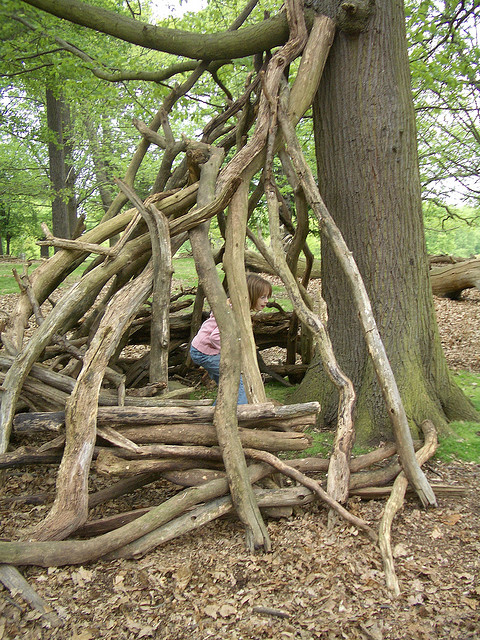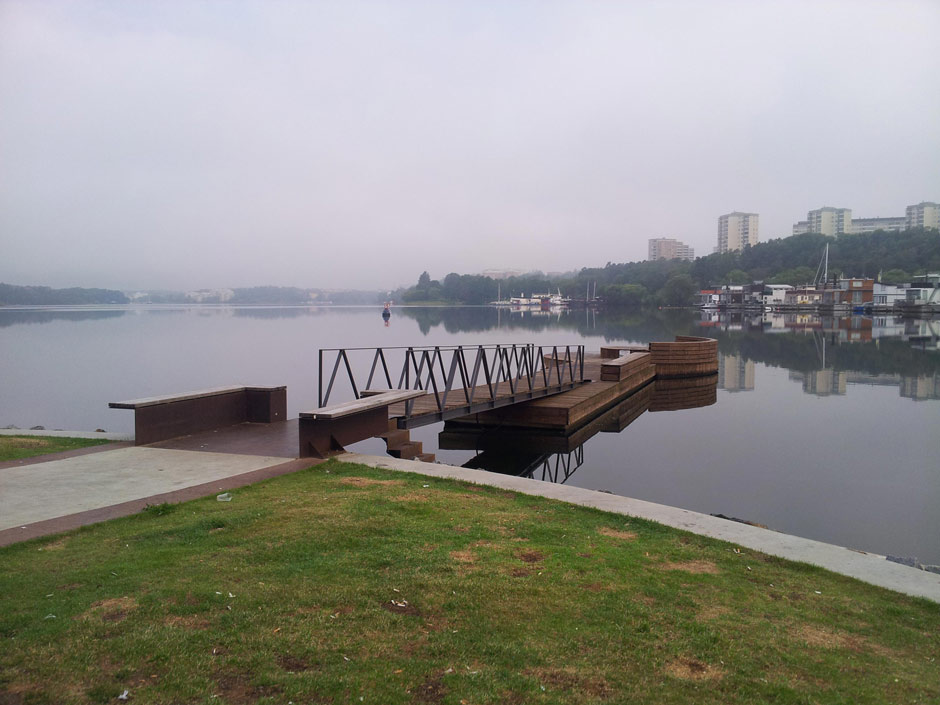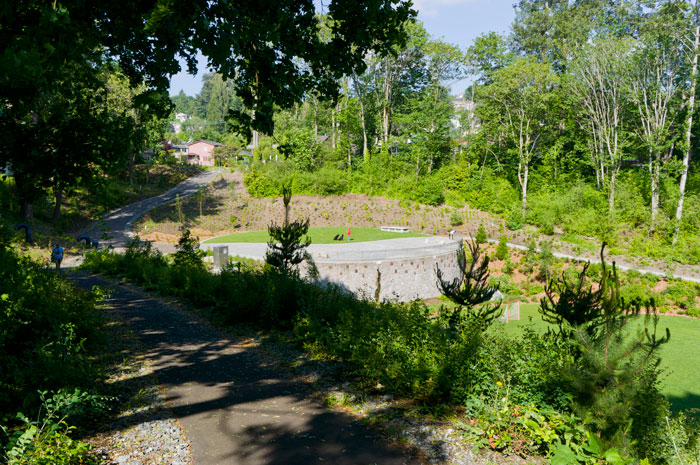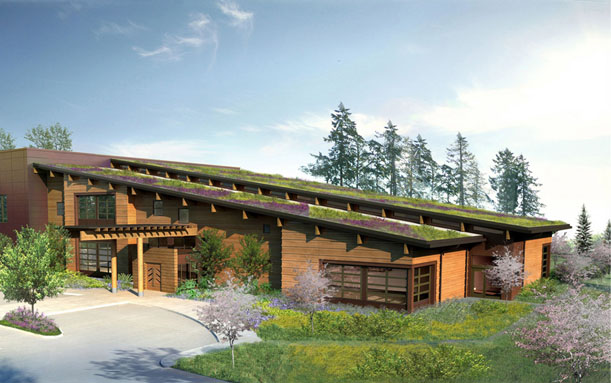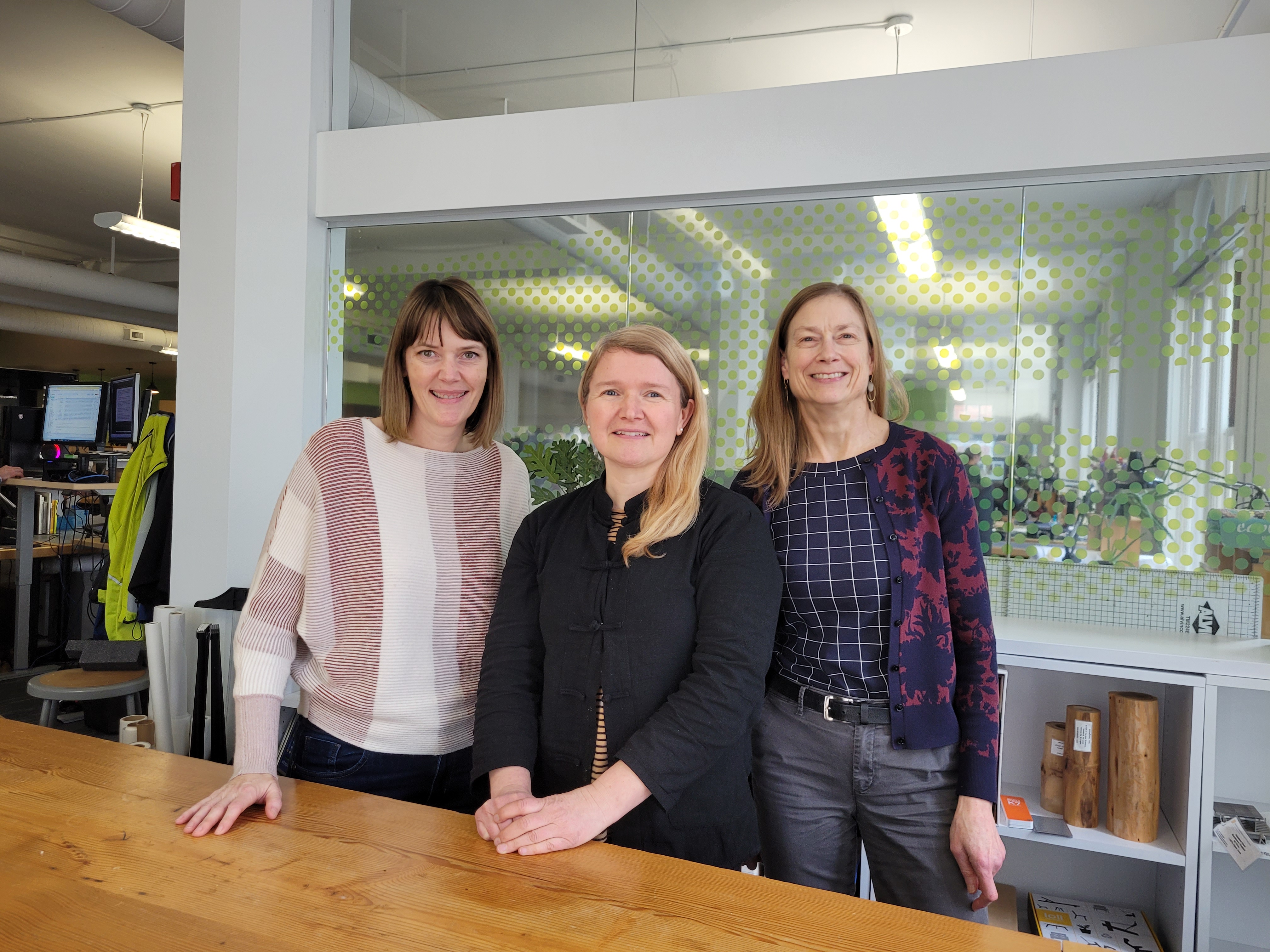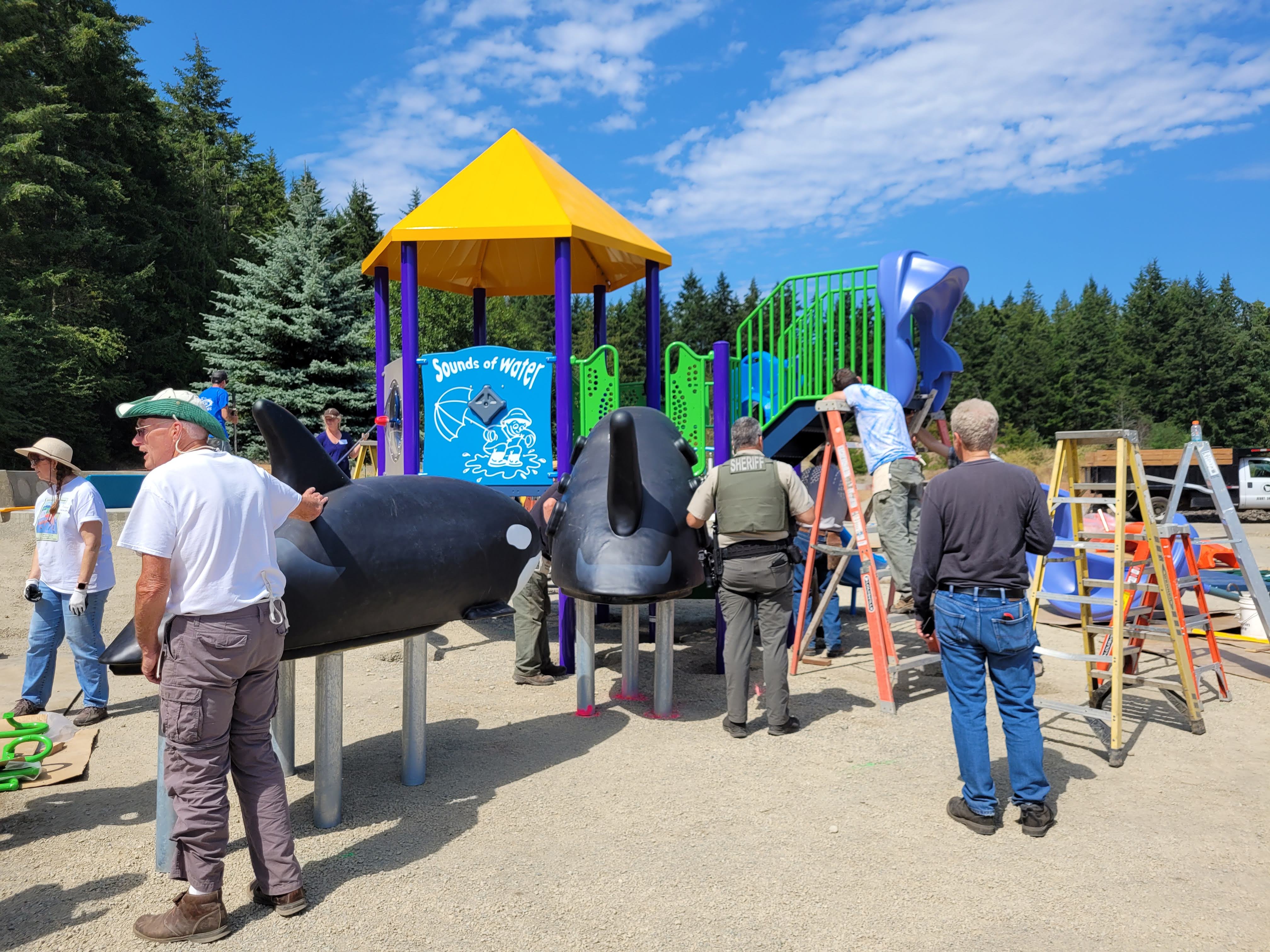Advocating Nature Play
June 5, 2012 | By Admin |
By Kristin Tollefson, Public Artist and Educator
In considering how to incorporate the information gleaned from the Site Analysis phase and the preferences voiced by the community, the City staff and consultant team began to explore an approach to park planning that is beginning to receive increased attention in the United States and Europe.
In his groundbreaking book, Last Child in the Woods, Richard Louv describes today’s disconnection from the outdoor world as “nature deficit disorder” and “the human costs of alienation from nature.” A variety of cultural trends could be symptoms of such a phenomenon: attention deficit disorders, depression, obesity, and a lack of connectivity with natural cycles.
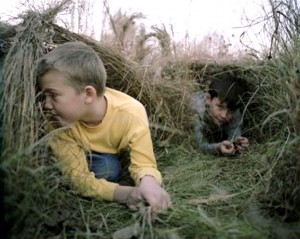
Image courtesy of Kate Anderson
Louv’s book suggests that a groundswell movement aimed at reconnecting children with nature has begun. He cites studies that show how children who interact with nature on a regular basis benefit physically, socially, emotionally, intellectually and creatively. Unstructured outdoor play allows for firsthand discovery, problem solving, and creative use of space, materials, and time. These two girls building a stick fort depict this sort of active engagement and its tangible results.
Open-ended opportunities for play invite children’s participation in the environment and hold their interest as a result. Robin Moore, an international authority on the design of environments for children’s play, learning, and education suggests, “Natural spaces and materials stimulate children’s limitless imaginations, and service as the medium of inventiveness and creativity.” In nature, children slow down, become curious, and take notice of what is happening in their surroundings. They often seek out natural objects for play that have multiple uses or interpretations: a rock is a hill, a castle, an elephant; a hole is a volcano, a cooking pot, or a hiding place; sticks are wands, spoons, tent poles, and scepters. Children return again and again to these archetypes, as is evident in the image of a rock slide in England that has smoothed and improved years of repetitive use.
Nature play promotes a range of physical agility and strength building, kinesthetic learning, and sensory acuity: children learn deeply through firsthand experience. Climbing allows children to change their perspective from that of a small person to a taller one, grown-up or giant: hills, stones, and limbs offer a variety of options. Exerting energy makes them feel powerful, which in turn engenders capable behavior – children will often push their envelope of ability during outdoor free play. Learning with one’s whole body in this kind of setting (as opposed to organized sports which offer a prescriptive process) develops kinesthesia – muscle intuition – that supports a lifetime of self-awareness and wellbeing.
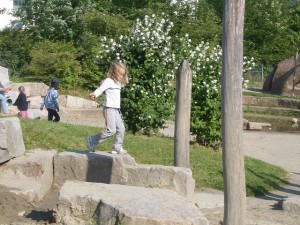
Studies of recreation in schoolyards with both green areas and manufactured play areas have shown that children engage in more creative forms of play in the green areas, and they also play more cooperatively in these spaces. In 2008, children at the Learning Community, a charter school in Rhode Island, designed their own playground, transforming a concrete parking lot into a green hill with trees and room for both active play and quiet contemplation. Their choice of these remarkable spaces manifested desires held by many children for places to play that are simultaneously green, adventuresome and welcoming.
Nature has a calming effect on trauma, and acts as a soothing antidote to the chaos of contemporary life: here children can engage their animal inclinations to nest, create small spaces, and ground themselves on the earth. Witnessing natural cadences in seasons, tides, weather, and planets sparks wonder. Becoming aware of these cycles of plant and animal life reminds us of the cycles of our own human lives.
“In the same way that protecting water and protecting air are strategies for promoting public health, protecting natural landscapes can be seen as a powerful form of preventive medicine.”
Howard Frumkin, Director of the National Center for Environmental Health at Centers for Disease Control

